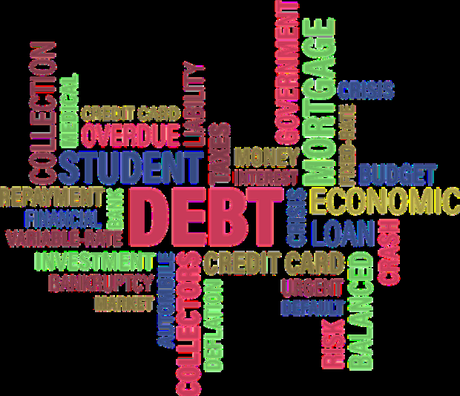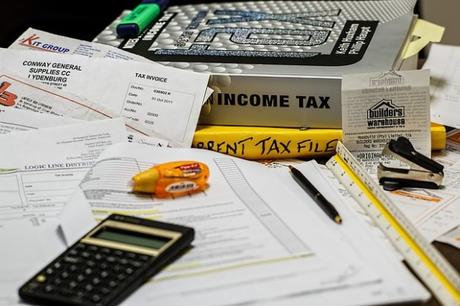
College graduates are no strangers to debt. In fact, the average class of 2016 graduate left school with $37,172 in student loans.
If you're one of these debt-ridden grads, loan forgiveness probably sounds like a dream come true.
Unfortunately, loan forgiveness programs aren't always as promising as they sound. Some leave you with a large tax bill, while others require years of tedious paperwork before offering any aid.
So before setting your sights on federal student loan forgiveness, consider these possible drawbacks.

1. It can take a long time
When we talk about federal student loan forgiveness, we're referring to a few different programs. One popular option is Public Service Loan Forgiveness (PSLF). This program offers loan discharge after 10 years of payments while working for a qualifying public service employer.
The other main option for federal student loan forgiveness comes from income-driven repayment plans. After you make reduced payments on these plans for 20 or 25 years, the government will cancel any remaining student loan balance.
Whichever option you choose, you'll have to wait years - even decades - before the government discharges your loans. Your kids might even be in college before you get relief.
Even though there's light at the end of the tunnel, you could be making payments for a long time before getting loan forgiveness from the federal government.
2. You might need to re-apply each year
In addition to tracking years of service and making qualifying payments to earn forgiveness, you'll likely need to keep up with yearly paperwork. To get on an income-driven repayment plan, you'll need to provide annual proof of your income and family size.
The PSLF program also requires evidence that you worked in a qualifying organization every year. When you apply for forgiveness, you'll need to provide the PSLF Employment Certification form for every year of service. Though it's not required to submit this paperwork every year, Federal Student Aid recommends keeping up with it annually to make sure you're on track.
Other student loan repayment plans let you set up autopay and forget about your loans. But when you're working toward loan forgiveness, you'll need to stay on top of your documents and submit paperwork year after year.
3. Your career options could be limited
To be eligible for PSLF and other career-based forgiveness programs, such as Teacher Loan Forgiveness, you must commit to working in a designated organization. Some of these organizations fall into critical shortage, high-needs areas. This might mean moving to a new location, working somewhere with limited resources, or accepting a job with lower pay.
If you're passionate about providing service in a high-needs area, that might not bother you - your career path might look similar with or without the promise of loan forgiveness. But before tying yourself to a job and location in the hopes of debt forgiveness, make sure you're satisfied with your career choice.
4. You might be denied
When it comes to PSLF specifically, you run the risk of committing to an organization that's not actually eligible.
"You could make a life-changing career decision only to find out at the eleventh hour that your public service does not qualify for loan forgiveness," said Mark Kantrowitz, a financial aid expert and publisher of Cappex.com.
Borrowers who worked at the American Bar Association found this out the hard way: Even though they filed the right paperwork, the Department of Education rescinded its approval for PSLF. After years of work, people found out they might not qualify for loan forgiveness. A lawsuit is currently pending to settle this dispute.
5. You could get hit with a big tax bill
If you qualify for PSLF, you'll be free and clear of student loans after 10 years. But if you get forgiveness after 20 or 25 years on an income-driven repayment plan, you'll still have to pay income taxes on the forgiven balance.

"The forgiveness after 20 or 25 years in the income-driven repayment plans is treated as taxable income under current law," said Kantrowitz. "This means you might be substituting a tax debt for the education debt. True, the tax debt will be smaller, but it may be just as unaffordable."
Before you can say goodbye to your student loans, you'll need to settle this tax bill. It will cost a lot less than what you had in student loan debt, but make sure you're prepared for this final expense.
6. You might pay more in interest
Income-driven repayment plans lower your monthly student loan payments to a small percentage of your income, but they also extend your repayment terms to 20 or 25 years. As a result, you'll likely end up paying a lot more in student loan interest in the long run.
Let's say you owe $30,000 in student loans with a 5.96% interest rate. If you paid your loans off in the standard 10-year time frame, you'd pay $9,895 in interest. But if you extended your repayment term to 20 years, you'd pay more than twice that - $21,417, to be exact.
These income-based repayment plans can help you afford your monthly payments now, but can be more costly over the life of your life. Make sure you understand the long-term consequences of switching to an income-driven plan, even if you qualify for loan forgiveness in the end.
7. Programs could change or disappear in the future
All of these loan forgiveness programs are subject to change in the coming years. The Trump administration recently unveiled a new education budget proposal, which called for the elimination of PSLF. Plus, it sought to replace the four income-driven repayment plans with just one.
Although Congress will likely make significant revisions to his proposed budget before passing it, no one can say for sure what changes are on the horizon. If you haven't already applied for PSLF or another one of these plans, you might end up with different options in the near future.
Understand your student loan repayment options
Despite these downsides, federal student loan forgiveness is a great option for many borrowers. It's not the only way to deal with your student loan debt, however.
Beyond federal forgiveness programs, there are private and state-sponsored loan repayment assistance programs throughout the country. Depending on your career and location, you could earn money to help pay your student loans.
If you need temporary relief from high student loan bills, you could rely on an income-driven repayment plan in the short-term. But once you start making more money, you could ramp up your payments to get out of debt faster.
Finally, refinancing your student loans can help you lower your interest rate and change your repayment terms. You could shorten your terms to pay your loans faster or extend them for lower monthly payments. Plus, you can consolidate multiple loans into one to simplify the repayment process.
But before committing to a loan forgiveness program, make sure to explore all of your student loan repayment options. By learning the pros and cons of these strategies, you can find the one that will help you conquer student debt once and for all.
About the Author:
Rebecca Safier is a writer for Student Loan Hero. Student Loan Hero combines easy-to-use tools with financial education to help millions of Americans living with student loan debt. She writes about personal finance, career development, and education. When she's not traveling, Rebecca's writing from cafes all around Boston. You can follow her on Twitter @r_safier.

Ms. Career Girl was started in 2008 to help ambitious young professional women figure out who they are, what they want and how to get it.

